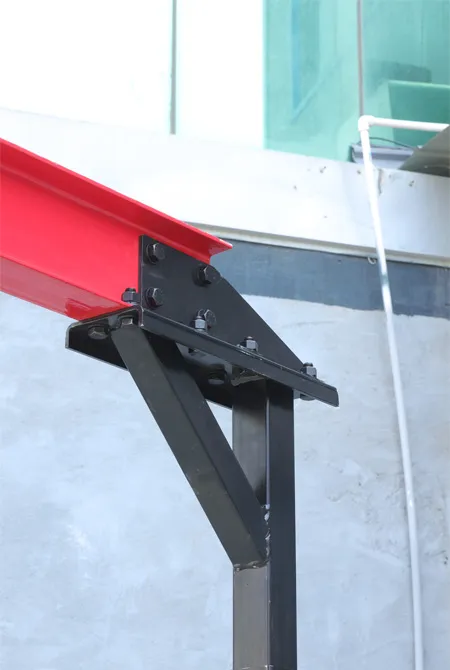machines to move heavy objects
Machines to Move Heavy Objects Revolutionizing Material Handling
In our modern world, the transportation and handling of heavy objects is a critical component in various industries, from construction and manufacturing to shipping and logistics. Moving heavy loads manually is not only inefficient but also poses significant health and safety risks. Fortunately, advancements in technology have introduced a variety of machines designed specifically for the purpose of moving heavy objects safely and efficiently. This article explores some of the most commonly used machines for this purpose, highlighting their functions, benefits, and applications.
1. Forklifts
Forklifts are among the most recognized machines for lifting and transporting heavy materials within warehouses and industrial settings. These powerful vehicles come in various designs, including electric, diesel, and LPG-powered options, each suitable for specific environments and tasks. Forklifts can elevate loads to considerable heights, making them ideal for stacking inventory or handling materials in narrow aisles. Their versatility allows them to maneuver through tight spaces, and with attachments such as side shifters or clamps, they can handle various load types, enhancing their utility in material handling.
2. Cranes
Cranes are essential machinery in construction sites and heavy industry, employed to lift and move exceptionally heavy items like steel beams, large machinery, and even shipping containers. Available in various forms—such as tower cranes, mobile cranes, and gantry cranes—each type is suited to specific lifting tasks. Tower cranes are often used in high-rise building construction, while mobile cranes provide flexibility on job sites needing mobility. Cranes utilize complex systems of pulleys and cables, allowing them to lift loads that are many times heavier than their own structure, making them invaluable for heavy lifting operations.
3. Hoists
Hoists are mechanical devices used for lifting or lowering a load by means of a drum or lift-wheel around which the rope or chain wraps. They are commonly found in factories, warehouses, and construction sites. Hoists come in several types, including electric, manual, and pneumatic, making them adaptable to various lifting needs. Electric hoists can lift heavy loads with minimal physical effort, which not only reduces labor costs but also enhances safety by minimizing the risk of injury associated with manual lifting.
machines to move heavy objects

4. Pallet Jacks and Pallet Trucks
Pallet jacks, often seen in warehouses and retail operations, are designed to lift and move pallets of goods. These compact machines consist of two forks that slide under the pallet, allowing the operator to lift it off the ground for maneuvering. Manual pallet jacks require physical effort, while electric models simplify the task, making it easier to transport heavy loads over longer distances and reduce the strain on workers. Pallet jacks are vital for efficiently managing inventory and handling goods during shipping and receiving processes.
5. Conveyors
In manufacturing and distribution environments, conveyors are essential for moving heavy items along a production line or to different areas of a facility. Conveyor systems can be powered or manual and come in various forms, including belt conveyors, roller conveyors, and chain conveyors. These machines significantly enhance efficiency by automating the movement of goods, reducing the need for manual handling and allowing for a steady flow of operations. Their ability to transport heavy loads over long distances without direct labor intervention drastically improves productivity.
6. Skid Steer Loaders
Skid steer loaders are compact, versatile machines equipped with arms that can be fitted with numerous attachments for a wide range of tasks. These machines are particularly useful in construction, landscaping, and agriculture for moving heavy loads such as dirt, rocks, and debris. Their unique design allows for excellent maneuverability in tight spaces, making them ideal for both outdoor and indoor applications. With attachments such as forks, buckets, and grapples, skid steers can effectively handle various heavy materials.
Conclusion
The use of machines to move heavy objects has revolutionized the way industries operate, drastically improving safety, efficiency, and productivity. With a diverse array of equipment available, businesses can choose the right machinery tailored to their specific needs, ensuring that heavy lifting and transporting tasks are completed efficiently and safely. As technology continues to evolve, we can expect even more innovative solutions to emerge, further enhancing our capabilities in handling heavy loads across different sectors. Embracing these advancements is not just a matter of operational efficiency; it is a crucial step in safeguarding the workforce as well.
-
Unlock Seamless Relocation with Our Heavy Equipment Moving ExpertiseNewsJun.06,2025
-
Unleash Unrivaled Flexibility with Our Adjustable Gantry CraneNewsJun.06,2025
-
Unleash Heavy-Duty Efficiency with Our Industrial Gantry Crane SolutionsNewsJun.06,2025
-
Revolutionize Steel Handling with Our Magnetic Lifter RangeNewsJun.06,2025
-
Master Equipment Mobility with Premium Machinery Mover SolutionsNewsJun.06,2025
-
Elevate Your Material Handling with Magnetic Lifter TechnologyNewsJun.06,2025
-
YS Permanent Lifting Magnets: The Smarter Way to Handle SteelNewsMay.22,2025
